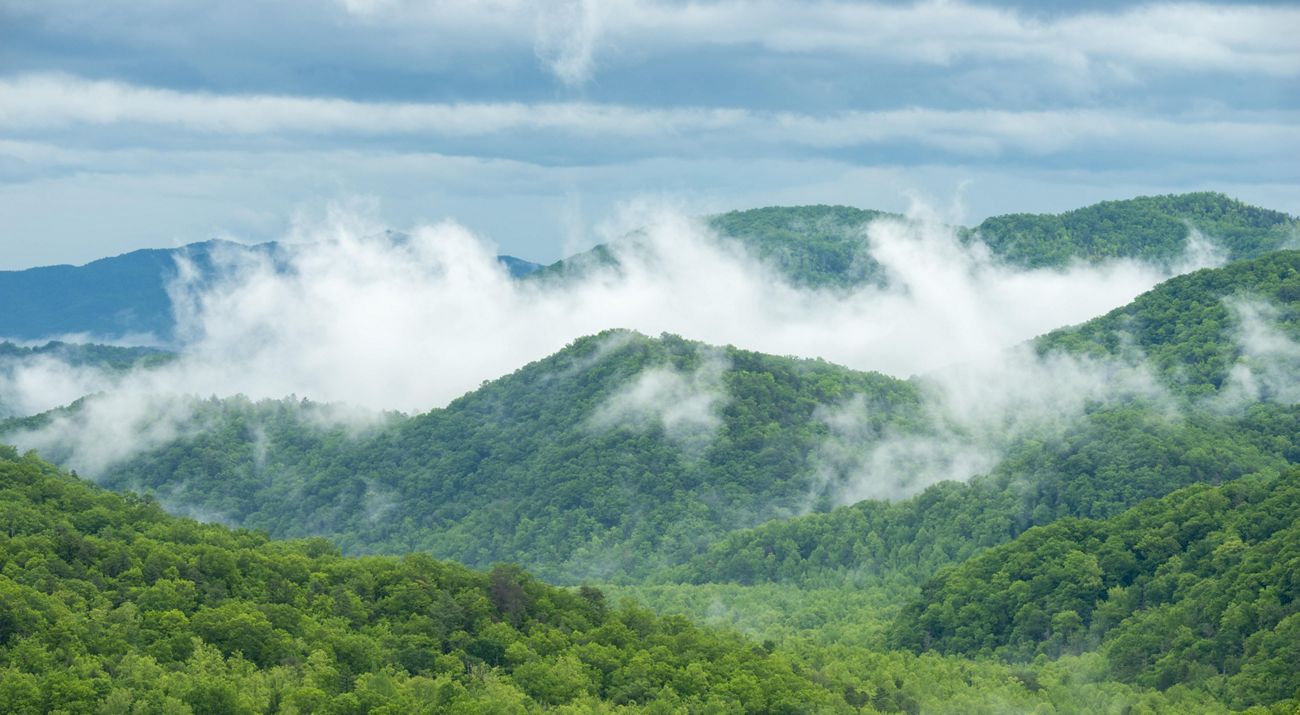Conserving Resilient Lands
Working to transform how we manage natural and working lands.

Since 1978, The Nature Conservancy has worked with partners in Tennessee to conserve more than 450,000 acres of land to protect plant and animal species, support sustainable land uses and ensure that natural spaces can be enjoyed by future generations. These efforts also expand outdoor recreation opportunities, which enhance human health and have a positive impact on local economies. Conserving key areas helps to protect and manage a landscape that is resilient in the face of a changing climate and capable of supporting the life cycles of diverse species.
By The Numbers
-

4,000+
plant and animal species documented in Tennessee
-
11,500
caves, more than any other inland state
-

1.2 B
tons of carbon sequestered by Tennessee forests
Protecting Land
Acquiring land and conservation easements represents one tool that The Nature Conservancy uses to ensure that plants and animals will be protected in the long-term. Sometimes TNC acquires land or an easement to include in our network of Tennessee nature preserves. Other times, we purchase land or an easement that will eventually be owned or managed by a like-minded government agency, conservation organization or private landowner.
Managing Land
Keeping in mind that we can't acquire every acre in need of protection, TNC works with agency partners, conservation organizations, private landowners and local communities to manage lands key to supporting native plants and animals and providing natural resilience to climate change. This type of work includes a variety of tools and approaches, from planting trees to returning disturbances like fire to the landscape and eliminating invasive, non-native species and pests.

Restoring Forests
Protecting and restoring native forests and woodlands supports wildlife, benefits water quality and combats the effects of climate change.

Delivering "Good" Fire
Prescribed burning represents an important tool that mimics natural disturbances that once occurred in many parts of Tennessee.

Protecting Working Lands
The Nature Conservancy is working with the agricultural industry, landowners and floodplain scientists to find solutions that will secure the health of waters, wildlife and working farms across West Tennessee..

Taking It Underground
With more caves than any other U.S. state, Tennessee conservation work requires skills and expertise in studying, restoring and monitoring unique subterranean habitats that harbor diverse bat populations and other species.
Beyond Our Borders
The Nature Conservancy’s 253,000-acre Cumberland Forest Project—located in a Central Appalachians landscape spanning Tennessee, Kentucky and Virginia—represents a project unlike any other pursued in the region. An investment fund assembled by TNC retains ownership of the land and TNC manages the land. Other entities have owned the coal, oil and gas reserves located beneath the surface for many decades. These mineral estate owners must pay extraction revenues, also known as royalties, to the surface landowner according to local, state and federal laws. Ever since striking this deal in 2019, TNC has reinvested these mineral royalties into economic development and conservation projects in local communities within the Cumberland Forest Project geography.
Your Support Matters
Help us achieve the following outcomes by 2030:
- Secure 50,000 acres of climate-resilient land, increasing TNC’s total protected land portfolio to a half-million acres.
- Implement prescribed fire on 68,000 acres to maintain healthy ecosystems.
- Restore 10,000 acres of shortleaf pine-oak woodlands and native grasslands on the Cumberland Plateau. This includes planting 5 million shortleaf pine seedlings to enhance forest resilience.
- Fabricate and install 8 cave gates at high-priority caves to protect cultural resources and cave fauna from disturbance.
- Install 10 new and improve existing Motus towers throughout Tennessee, bringing counts from 17 to 27.




